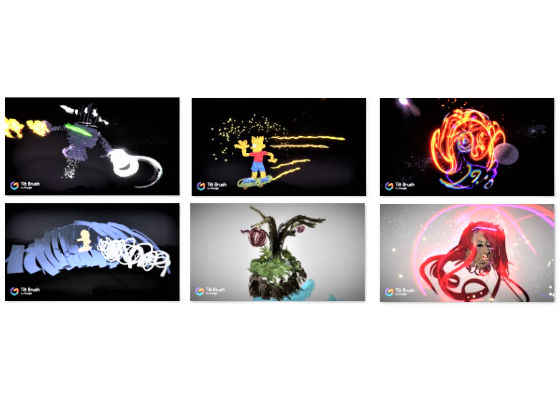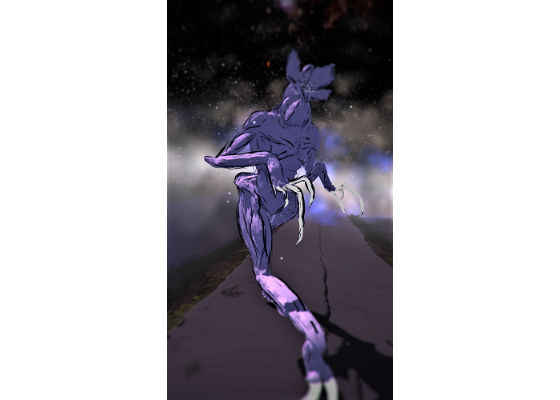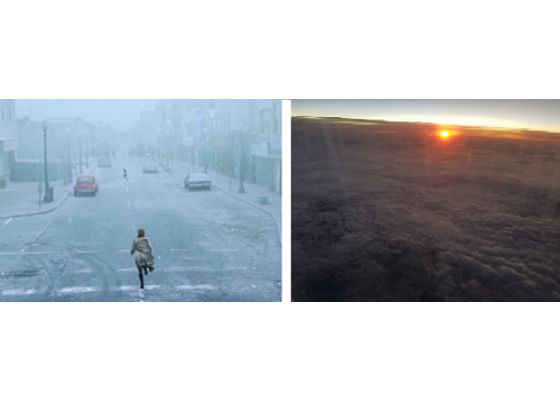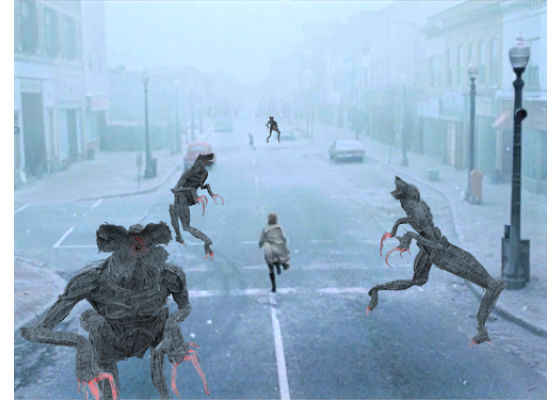Democratizing 3D Content Creation: Tilt Brush to Adobe’s Project Felix

For the 2D artist and designer, creating 3D concept art, 3D product photography, or 3D UIs has been challenging. Typically, this work is only in reach to those skilled with and trained in 3D tools. This post will expose new possibilities for artists thanks to recent tools from Google* and Adobe*, and how they are democratizing 3D content creation for the creative class.
I was fortunate enough to attend Adobe* MAX in November as a VR Tilt Brush artist. Tilt Brush is not my main gig, but I’m gaining some reputation with it, and was asked to assist MAX attendees to use Tilt Brush. Adobe* also gave me an early preview of their Project Felix, which is a 3D tool designed for 2D Graphic Designers. My job was to inspire and encourage attendees at MAX to rapidly create 3D artwork without having 3D art skills.
Here are some Tilt Brush Sketches from the attendees. Each was their first time using the tool.
It was evident from the attendees that Tilt Brush lowers the barrier of entry for 3D content creation, allowing anyone to easily create 3D scenes and assets from inside a VR experience (see my post on tips for sketching in Tilt Brush). You simply paint in space to create the assets you want. It's amazing and it's a thrill.
Admittedly though, Tilt Brush does has limitations. It is difficult to create highly structured 3D models and meshes. Creating clean, perfectly shaped and smooth 3D models is still best done in those more complex 3D editors. However, the value of Tilt Brush is the ability to rapidly and intuitively create and design a scene or 3D object. It is a good tool to rough out your idea in 3D. You need not take a series of classes, memorize a litany of key commands, or understand the difference between quad or triangles meshing.
The program is clearly simple for anyone one to use, with only 3 panels of tools which work by waving and pointing a controller in the VR space. With Tilt Brush, you can do basic asset creation or create large scale 3D scenes. You can even film video inside Tilt Brush. And with new computer form factors like the MSI VR one backpack, artists have the freedom to move creatively without tripping over a tethered cable. You could imagine designing game characters, film or photography sets, or roughing out a product design in Tilt Brush. Still, materials and scene controls in Tilt Brush are lacking should you want to create a good realistic comp or final artwork. This is where Project Felix comes in.
Below are two assets I created in Tilt Brush before the show to showcase my workflow. One is a creature loosely based on the Netflix show Stranger Things. The other is a slightly retro pulp sci-fi looking space ship. I sketched them free form, and then exported from Tilt Brush. These are cute, but not photo realistic.
Adobe's Project Felix is in public beta right now, and though it is still an early product, it is very promising. The idea behind Felix is that you can create quality 3D artwork using 2D techniques common with Illustrator and or Photoshop, thus lowering the barrier of entry. It assumes that you know how to work with layers, how to play with filters, and composite a 2D scene. Adobe takes all the hard things like setting up a camera or source matching lighting or environments, and uses Deep Learning algorithms to automate what someone would do in a 3D scene editor. Adobe does this by having you drop in 2D photographs for your 3D scene. That is all you do. Felix will calculate the environment horizon and vanishing points and set the lighting, environment reflections, and ambient color – all things that take hours to do well in 3D tools. With this done, any 3D asset dropped over the photo will automatically be lit properly to match the photo.
Here are examples of background scenes I chose to use for these two images.
Another common barrier for 2D artists is to understand how to properly assign materials to 3D assets. For most 3D programs this is very technical and not very artsy. Adobe borrows from its history of similar workflow in Photoshop and Illustrator using the magic wand tool. Felix is smart enough to determine where the boundaries of the mesh vertices are to make this task super simple. You need only select parts of the object using the wand, then drop materials like glass, metal, copper, or fabric where you want them applied. With this done, crude Tilt Brush sketches start to look very photorealistic.
Because rendering is needed to see the work you have 2 view ports you can work with. One is a fast preview that allows you to select, move, and rotate items in the scene without advanced rendering. You also get a real-time render preview that gives you a good idea of how the rendering will be done, with light and shading applied to the materials. At any time, you can run a render of the work and save as a PNG or PSD file under various resolutions. Again, simple, intuitive and fast.
In the end, Adobe has turned complex 3D work into a simple 2D workflow. For the 2D artist you are now able to join the exciting world of 3D art. For reference, here are the results of my Tilt Brush work, once I put it in Project Felix. These took just a few minutes to produce in Project Felix.
You can easily see how this opens 3D art and creation to 2D artists. No longer do you need to send work over to the "3D guru" in the office. Now you, the 2D artist, can create that cool concept art for games or prototype a fancy product shoot from 3D assets. The possibilities for your art, just got more interesting.
For more such intel Modern Code and tools from Intel, please visit the Intel® Modern Code
Source:https://software.intel.com/en-us/blogs/2016/12/15/democratizing-3d-content-creation-via-tilt-brush-to-adobe-s-project-felix










